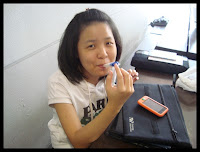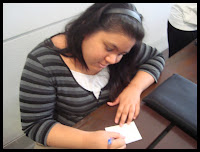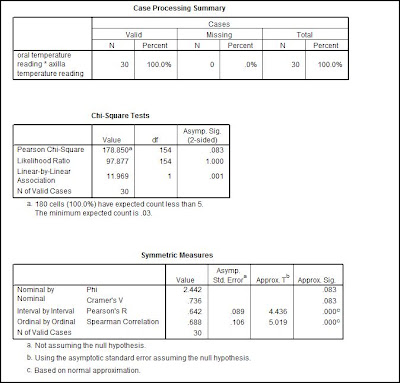INTRODUCTION
We are a group of 3 students from Subgroup 2, NR0924. Our group members consist of Ye Yun, Jevini and Benecia. We have decided to name ourselves as “The Three Musketeers”. We are currently in Year 2 and this is our first time doing a statistics project. The topic we have chosen is – Is a person's oral temperature related to axilla temperature?
We decided to choose this topic as we find that it is very relevant to our nursing practice. In the hospital ward, temperature taking is a simple and common procedure but often it is being underestimated. The common route nurses always take measurements of patients’ temperature is either orally or axillary. However, there is a high chance that the nurses may or may not know if there is any difference between oral and axilla temperature. Just by randomly choosing a site to measure is not effective enough to determine the patients’ temperature. Therefore, in our research, we will need to determine if there is really a difference in temperature reading from orally versus axillary and as a result, affect the patient’s condition.
TESTABLE HYPOTHESIS
- Null Hypothesis (Ho): There is no significant relationship between oral and axilla temperature measurement.
- Research Hypothesis (H1): There is a significant relationship between oral and axilla temperature measurement.
OPERATIONALIZATION
The instrument – which is the thermometers, are used for our research study purpose only. We used two new thermometers for measurement and the thermometers were calibrated by the manufacturer.
Name: Actherm Digital clinical thermometer
Model: ACT 2020
Thermometer accuracy: ±0.1°C
METHOD OF RESEARCH
The three of us came together and standardized the measurement site and the method of measuring. We decided on:
- Oral temperature taking: Place thermometer in the mouth, under the tongue.
- Axilla temperature taking: Place thermometer on Right side of arm.
- Jevini – in charge of briefing the participants and obtain informed consent.
- Ye Yun – in charge of taking participants’ axilla temperature measurement
- Benecia – in charge of taking participants’ oral temperature measurement
~ Prior to data collection
Before carrying out our research, we conducted a brief introduction to our participants. These were the points that were informed to our participants:
- The purpose of our research
- What we will be doing throughout the whole process
- Obtained written informed consent
- Confidentiality was assured to every participant. [ All data collected will be kept confidential]
FIRST DATA COLLECTION
Date: 01 July 2010, ThursdayTime: 1330 – 1430hrs
Venue: Outside LTKH1
Sample size: 13 participants (10 classmates + 3 of us)
Informed consent form was given to participants. A data collection list was done up by us. Our researcher, Jevini, asked participants for personal particulars like their age and gender. In the data collection list, we also recorded the participant’s oral temperature and axilla temperature measurement next to their particulars.
Throughout the temperature taking, our participants were in a relaxed and seated position. Temperature taking was much easier as most of them were our classmates. They cooperated with us and provided much support to us. Temperature measurement was done twice on the same site to prevent any mistakes. And the final reading was an average of the two readings.
From the first data collection, we realized that most participants’ oral temperature readings are higher than axilla temperature reading.
Date: 01 July 2010, Thursday
Time: 1445 – 1600hrs
Venue: North canteen
Sample size: 17 participants (7 classmates + 10 coincidental participants)
For our second data collection, we proceeded to North canteen to search for more participants to take part in our research study.
Following the same as our first data collection, a brief introduction was carried out to our participants. Written informed consent was also obtained as well as the participants’ personal particulars. The same standard procedure of the temperature taking was followed the same way as our first data collection.
It was rather difficult to get more participants for our data collection. All our existing classmates were asked and we needed to invite more participants to take part in our research. We then decided to approach anyone we see in the North canteen and ask them if they are willing to take part. Thank goodness most agreed and we managed to complete our data collection.














